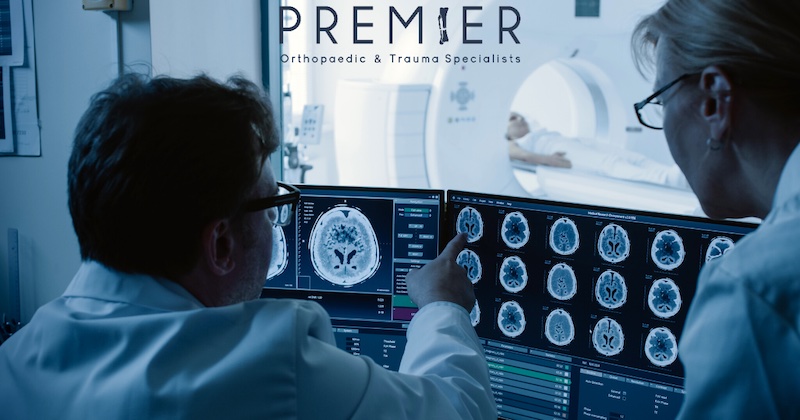Just about everyone has had diagnostic imaging for an injury or even for routine health check-ups such as a dentist’s visit. When we begin the diagnostic process for any injury or condition involving the skeleton, three of the most common diagnostic imaging modalities are x-ray, CT and MRI.

X-ray is a simple and fast diagnostic test that emits radioactive waves which penetrate the soft tissue of the body but cannot penetrate structures containing calcium like bone or teeth. Bony structures appear bright white on the film and can help us assess whether there is a significant fracture or other deformity in the bone that requires care. However, X-rays are not precise enough to show hairline fractures and they cannot help us diagnose soft-tissue injury.
An MRI on the other hand does not use radiation, but rather very strong magnets to create radio waves that produce a much more detailed image of both the hard and soft tissues in the area being evaluated. MRIs are much larger and more complex machines and aren’t often found in doctor offices. Most patients have to be referred to a third-party facility to get the test. MRIs are excellent for visualization of inflammation, soft tissue injuries of the tendons and ligaments and details of issues in the spine and joints.
A CT scan uses precisely target radiation to create a 360-degree view of the area in question. CT scans are fast and more detailed than X-rays but still fall short of an MRI when it comes to visualizing soft tissue. As such, CTs are often used in more emergent situations where trauma has occurred, and fracture or organ injury is suspected.
So, What’s the Difference?
Ultimately, the main difference from a diagnostic standpoint is time, detail and what structures can be visualized. X-rays do not offer the level of detail that MRIs or CT scans do, and they do not show soft tissue problems. Take, for example, the spine. An x-ray will show spinal alignment and larger fractures of a vertebra. However, if a bulge or herniation of a disc is suspected, an x-ray will not be able to confirm that. An MRI show whether the disc has change shape in any way and if any nerves are irritated or impinged.
Why not use an MRI every time?
MRIs are expensive, time-consuming and ultimately unnecessary for many straightforward injuries including fractures. If soft tissue involvement is suspected, however, an MRI may be appropriate and will certainly be ordered if necessary.
Decades of experience has allowed the orthopedic community to create a series of guidelines and standards that dictate when advanced imaging such as MRI and CT scans should be used. We encourage you to have a discussion with your orthopedic surgeon about your injury and to understand why your surgeon may or may not order advanced imaging for the diagnosis.


